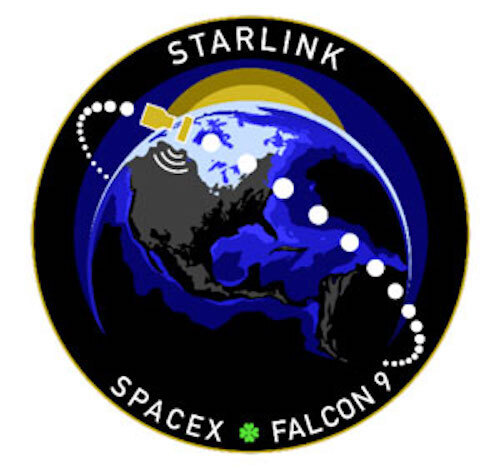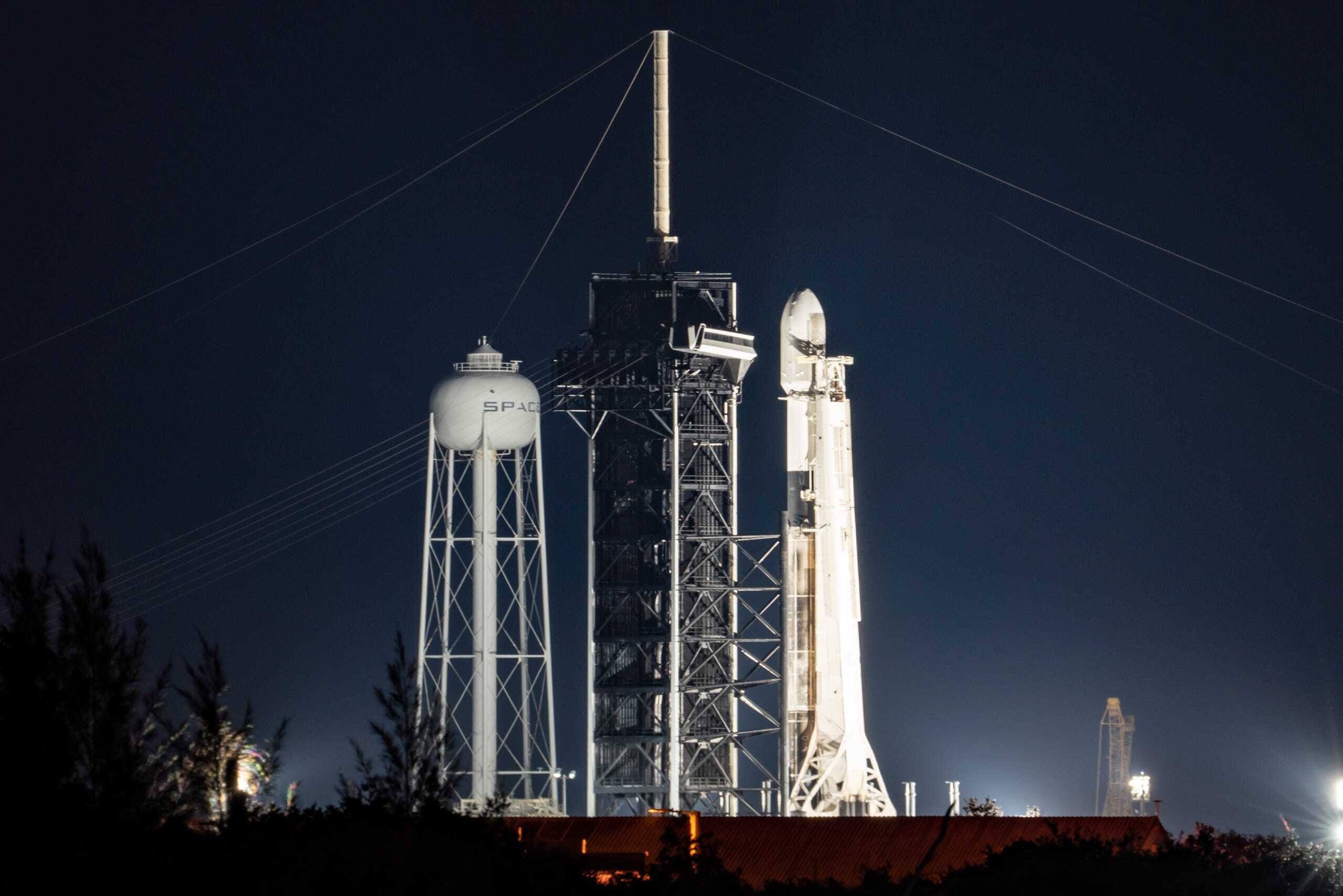13.06.2022

At Kennedy Space Center, meanwhile, SpaceX teams are gearing up for the Space Coast's next launch targeted for Friday, June 17. A Falcon 9 rocket is expected to boost the company's 49th batch of Starlink internet satellites from pad 39A sometime between 10:30 a.m. and 11:30 a.m. ET.
Launch Friday, June 17
- Rocket: SpaceX Falcon 9
- Mission: 49th batch of Starlink internet satellites
- Launch Time: Between 10:30 a.m. and 11:30 a.m. ET
- Location: Pad 39A at Kennedy Space Center
- Trajectory: Coming soon
- Landing: Drone ship
- Weather: Coming soon
Quelle: Florida Today
----
Update: 16.06.2022
.
Florida weather solid for first of two SpaceX weekend launches

The Space Coast could see two Falcon 9 rocket launches in the coming days as SpaceX teams prepare to kick off the company's next Starlink mission at Kennedy Space Center – and weather looks solid so far.
First up at pad 39A is the 49th batch of Starlink internet satellites scheduled to fly between 10:40 a.m. and 12:20 p.m. ET Friday, June 17. Conditions during that window, according to a Wednesday report from the Space Force, were calculated at 80% "go."
"While a brief shower cannot be ruled out during the window as the East Coast sea
breeze initially forms and migrates westward, overall launch conditions generally look favorable on Friday," forecasters said Wednesday. "The main concern is the cumulus cloud rule."
If the launch delays to Saturday, weather remains 80% "go" but at-sea conditions for a drone ship recovery of Falcon 9's first stage decline from "low-risk" to "moderate risk."
The Starlink internet constellation has launched more than 2,500 satellites since the first operational flight in 2019. Since introduction, the standard plan's cost has risen from $99 to $110 a month but is available across a swath of North America, Europe, and Australia. SpaceX also recently announced a mobile internet kit for RV users.
Quelle: Florida Today
----
Update: 18.06.2022
.
Record-Breaking Falcon 9 Lofts Starlinks, Wraps Up 100th Booster Reuse
It may be Friday, but we should perhaps be relieved that it is not Friday 13th, for SpaceX—as if to tempt the gods of triskaidekaphobia—has successfully launched a Falcon 9 booster for the record-setting 13th time. Veteran core B1060 roared aloft from historic Pad 39A at the Kennedy Space Center (KSC) in Florida at 12:09 p.m. EDT, lifting 53 Starlink internet communications satellites smoothly into low-Earth orbit. Her job done, B1060 twirled and pirouetted her way back to a smooth touchdown on the deck of the Autonomous Spaceport Drone Ship (ASDS), “A Shortfall of Gravitas”, wrapping up SpaceX’s 100th mission with a flight-proven orbital-class booster. Attention now turns to Vandenberg Space Force Base, Calif., where another Falcon 9 stands poised to deliver Germany’s SARah-1 radar-imaging surveillance satellite into orbit no sooner than 7:19 a.m. PDT Saturday.
Flying today’s mission was none other than B1060, the first Falcon 9 core to log a 13th mission. First flown back on 30 June 2020 to deliver the third Block III Global Positioning System (GPS) navigation and timing satellite to Medium Earth Orbit (MEO) for the U.S. Space Force, she went on to support nine dedicated Starlink missions between September 2020 and last April, heaving a grand total of 500 of these flat-packed internet communications satellites into orbit.
She also launched Turkey’s powerful Türksat 5A geostationary communications satellite in January 2021 and the 88-payload Transporter-2 rideshare mission the following June. Less than two years since her maiden flight, B1060 has lifted an estimated 361,000 pounds (164,000 kilograms) of payload off the planet.
Her career has seen her land 12 times on the deck of an ASDS and once on solid ground at Landing Zone (LZ)-1 at the Cape. She was 2021’s most frequent flyer for SpaceX, logging six launches, more than any other Falcon 9 in a single calendar year. And early in 2021, she set a new record—now broken—for the shortest interval between launches by the same orbital-class booster.
Weather for Friday’s opening launch attempt proved highly favorable, with an 80-percent probability of acceptable conditions at T-0, tempered by a slight risk of violating the Cumulus Cloud Rule. With lower-than-normal rain chances and near-record heat, SpaceX readied for a weekend which could see three launches: today’s Starlink, tomorrow’s flight of SARah-1 out of Vandenberg and a third just past midnight on Sunday morning from Cape Canaveral Space Force Station, Fla., laden with a Globalstar-2 global mobile communications satellite and a secretive payload for an undisclosed U.S. Government customer.
Friday’s launch was slipped by a minute from its advertised 12:08 p.m. EDT launch time, and B1060 powered smoothly uphill at 12:09 p.m. EDT, her nine Merlin 1D+ engines providing 1.5 million pounds (680,000 kilograms) of thrust. It marked the 100th occasion since March 2017 that a previously-flown Falcon 9 core has been turned around and launched again.
That figure includes two Falcon Heavy missions in February 2018 and June 2019, whose side-boosters had flown before. In joint second place behind B1060 are her sisters B1051 and B1058—the latter of which first saw service to launch May 2020’s historic Demo-2 mission with NASA astronauts Doug Hurley and Bob Behnken—which have each chalked up 12 flights.
Eight minutes after launch, looking in surprisingly good condition for a vehicle with 13 launches, 13 re-entries and now 13 on-point touchdowns under its belt, B1060 landed safely on the deck of ASOG, wrapping up SpaceX’s 24th overall mission in the first 24 weeks of this year. Meanwhile, the Merlin 1D+ Vacuum engine of the Falcon 9’s second stage powered on, a six-minute “burn” delivering the 53 Starlinks toward their operational location at an altitude of 340 miles (550 kilometers), inclined 53.2 degrees to the equator. This pushes the number of Starlinks launched in 2022 to more than 760.
But with two more Falcon 9s gearing up for their own launches from the West Coast on Saturday morning and the East Coast just after midnight on Sunday morning, there is no hiatus in an aggressive schedule. The veteran B1071 core—a dedicated “Vandenberg Falcon”, making her third flight, having previously lofted the classified NROL-87 and NROL-85 payloads for the National Reconnaissance Office in February and April—will fly at 7:19 a.m. PDT Saturday from Space Launch Complex (SLC)-4E at the West Coast launch site. It is anticipated that B1071 will perform a Return to Launch Site (RTLS) maneuver and touch down on Vandenberg’s Landing Zone (LZ)-4.
Quelle: AmericaSpace
+++
SpaceX Falcon 9 rocket aces record 13th flight in Starlink satellite launc

